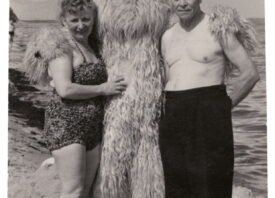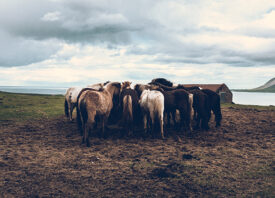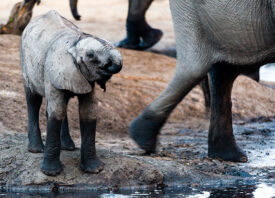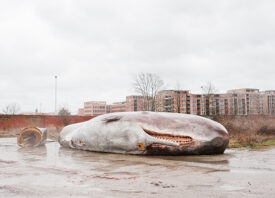Search this site
Searing Photos from the Frontlines of the Hidden War on Animals


“To some degree, I got used to witnessing suffering,” the Berlin-based documentary photographer Timo Stammberger admits. “But what haunts me are individuals I have connected with during my work. Their kind, innocent eyes become branded on my mind. When I look at my photos, I realize, almost all of them will already be dead by now.”
That statement is true for the vast majority of the animals featured in HIDDEN: Animals in the Anthropocene by We Animals Media, an unprecedented, 304-page, five-pound tome about animals exploited by people for food, entertainment, clothing, research, and more. The book is currently being funded.

The photojournalist Jo-Anne McArthur, the founder of We Animals Media, was inspired to create the book last year after witnessing a night market in Taipei, where, all around her, hundreds of thousands of fish and marine animals lay dead and dying. She saw people hacking the shells of living turtles, exposing their still-beating hearts, and she felt, as she had many times before, that she was standing on the frontlines of an invisible war.
HIDDEN is a collection of war photographs; the only difference between this book and the volumes that have come before it is that this one is about the suffering of animals. As we navigate the coronavirus pandemic, we now know that this large-scale suffering can bleed into our everyday lives–even when it takes place behind closed doors. The present circumstances of animals and the future of humankind are intertwined. Our health, in addition to our humanity, hangs in the balance.
“The coronavirus crisis has been a huge wake up call,” the environmental photojournalist Aaron Gekoski writes. “As a result, China and Vietnam have made sweeping changes to laws surrounding the wildlife trade and consumption of animals. Conservationists have been arguing for years that the current situation was an inevitability, as 75% of new diseases come from animals.”
Thirty photographers have contributed to making the book a reality. Collectively, their documentation spans six continents. Graphic images like these have, for decades, been overlooked or cast aside by publishers. When faced with suffering, many of us turn away, but these photographers have given us the rare chance to sit with the reality facing tens of billions of animals.

“When I make photos I try to think about images as open wounds that you won’t be able to ignore,” the photographer and undercover activist Konrad Lozinski says. “They should communicate pain.” As a physical book, HIDDEN will make it harder for us to give into the urge to avoid images of suffering. Documenting injustice is an act of courage; perhaps looking at it without flinching is too.
The book project reached its initial funding goal within just over 72 hours of the launch. The current goal is the sale of one thousand books. If this goal is reached, We Animals Media will send one hundred books to people and organizations of influence in any country: politicians, journalists, podcasters, teachers, chefs, NGOs, and world leaders.
“The audience I would like to reach the most are the people that hesitate to pick up this book because they don’t care or they don’t want to get confronted with hard images,” the Netherlands-based documentary photographer Sabine Grootendorst explains. “If I could get them to take a look at the stories that would mean a lot.”
As humans, we use and consume an estimated 80 billion land animals annually. Fish and other marine life–like those McArthur saw at the market in Taipei–aren’t measured as individuals but by the ton. The numbers are unimaginable.
And still, looking through the photographs, I, like Stammberger, think most about these individual animals, most of whom have died, without mercy, shortly after these photos were taken. This book is evidence of how they lived and how they were killed–and it’s proof of our complicity in their pain. It’s an indictment of our past and present, but at the same time, it represents hope for a better, kinder future.
“HIDDEN is a historical document, a memorial, and a call to action,” McArthur says. The first of those things–a historical document–might be the most ambiguous, but it’s just as important as the two that follow.
Generations from now, I imagine people turning through these same photographs and feeling echoes of the same heartache, outrage, and shame I do now, but perhaps the book’s meaning will change over time. Today, these photographs cry out, “This is happening, and it’s in our power to stop it.” In the future, if we heed their warning, these images might whisper something different: “This happened, and we won’t let it happen again.”
Support the historic project here.













